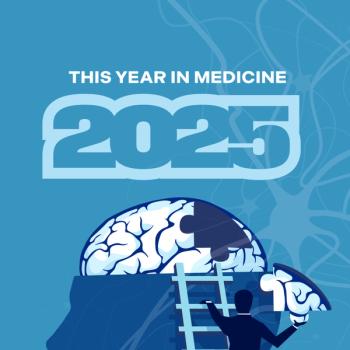
Dental Caries and Periodontal Disease Increase Ischemic Stroke Risk, Study Shows
Key Takeaways
- Co-occurring periodontal disease and dental caries significantly increase ischemic stroke and MACEs risk.
- Participants with both PD and caries had an 86% higher ischemic stroke risk compared to those with good oral health.
A 2025 study published in Neurology® found that people with both gum disease and dental cavities face significantly higher long-term risks of stroke and major cardiovascular events compared with those with good oral health.
A 2025 prospective study titled Dental Atherosclerosis Risk in Communities (DARIC) found that co-occurring periodontal disease (PD) and dental caries were both independently associated with increased risk of ischemic stroke and major adverse cardiovascular events (MACEs) in US cohorts.1 The study also reported that poor oral health was linked to these elevated risks, with particularly strong associations observed for increased risks of thrombotic and cardioembolic stroke subtypes in a median 21-year follow up with participants.
Published in the Neurology® Journal, DARIC analyzed data from participants originally enrolled in the Atherosclerosis Risk in Communities study (ARIC) who completed dental assessments between 1996 and 1998. Participants’ (n = 5986; mean age 63 [±5.6] years; 52% female) were categorized as having good oral health (n = 1640), PD only (n = 3151), or PD with caries (n = 1195). Researchers followed participants for two decades, using phone visits and medical records to identify stroke cases.
In the study, incident ischemic stroke and MACEs were adjusted through 2019, and Cox proportional hazard models estimated hazard ratios (HRs) for outcomes, adjusting for demographics and vascular risk factors. The relationship between regular dental care and oral disease status was further examined using logistic regression.
Senior author Souvik Sen, MD, MS, MPH, a professor of neurology at the University of South Carolina School of Medicine, and his colleagues found that participants with both PD and caries had an 86% higher risk of ischemic stroke, while those with PD alone saw a 44% greater risk compared to participants with good oral health.2 Furthermore, 4% of individuals with good oral health experienced a stroke, compared with 7% of participants with gum disease and 10% of those with both gum disease and caries.
“We found that people with both cavities and gum disease had almost twice the risk of stroke when compared to people with good oral health, even after controlling for cardiovascular risk factors,” Sen said in a statement.1 “These findings suggest that improving oral health may be an important part of stroke prevention efforts.”
Although DARIC provided data over the course of two decades, the study did have limitations. Participants were younger, with lower BMI, lower rates of hypertension and diabetes, and possessed more education than those excluded. Furthermore, the study relied on a single dental assessment that was completed at the start of the study and used education level as a proxy for socioeconomic status.
DARIC provided data regarding the risk of MACEs as well as ischemic stroke when compared to individuals with good oral health. All told, patients with PD only were associated with a 47% increased risk of MACEs, while those with PD and caries saw an 88% increased risk. Additionally, subtype analysis revealed particularly elevated risks of thrombotic stroke, with an HR of 1.81 (95% CI, 1.05–3.10) for PD only and 2.27 (95% CI, 1.22–4.24) for PD with caries. Similarly, for cardioembolic stroke, adjusted HRs were 1.82 (95% CI, 1.00–3.33) and 2.58 (95% CI, 1.27–5.26), respectively.
Researchers wrote in the study’s discussion that the results “underscore the importance of comprehensive oral health as a modifiable factor in cardiovascular and cerebrovascular disease prevention. Integrating dental care into routine medical risk assessment and promoting preventive oral hygiene practices may offer a novel strategy to reduce vascular risk at the population level.”
References
1. Wood S., Logue L., Meyer J., et al. Combined Influence of Dental Caries and Periodontal Disease on Ischemic Stroke Risk. Neurology Journals. 2025;1(4): e000036 DOI:10.1212/WN9.0000000000000036
2. Gum disease and cavities linked to increased stroke risk. New release. American Academy of Neurology. October 22, 2025. Accessed November 4, 2025. https://www.aan.com/PressRoom/home/PressRelease/5290
Newsletter
Keep your finger on the pulse of neurology—subscribe to NeurologyLive for expert interviews, new data, and breakthrough treatment updates.




















